India

India, is a country in South Asia. It is the seventh-largest country by area,
the second-most populous country with over 1.2 billion people, and the most
populous democracy in the world. Bounded by the Indian Ocean on the south, the Arabian
Sea on the south-west, and the Bay of Bengal on the south-east, it shares land
borders with Pakistan to the west; China, Nepal, and Bhutan to the north-east;
and Burma and Bangladesh to the east. In the Indian Ocean, India is in the vicinity of Sri Lanka and the Maldives;
in addition, India's Andaman
and Nicobar Islands share a maritime border with Thailand
and Indonesia.
According to the 2001 census,
there are 27 million-plus cities in India; among them Delhi, Mumbai, Kolkata, Chennai, Bangalore, Hyderabad,
Ahmedabad
and Pune are the most
populous metropolitan areas.
Tourism
The tourism industry of India
is economically important and grows rapidly. It supported 39.5 million jobs,
7.7% of its total employment. This gives India the third rank among
countries with the fastest growing tourism industries over the next decade. India has a
large medical tourism sector which is expected to grow at an estimated rate of
30% annually to reach about ₹ 95
billion by 2015.
According to provisional
statistics 6.29 million foreign tourists arrived in India in 2011. This ranks India as the
38th country in the world in terms of foreign tourist arrivals. Domestic
tourist visits to all states and Union
Territories numbered
850.86 million. The most represented countries are the United States (16%) and the United Kingdom
(12.6%). In 2011 Maharashtra, Tamil Nadu
and Delhi were the
most popular states for foreign tourists. Domestic tourists visited the states Uttar
Pradesh, Andhra Pradesh and Tamil Nadu
most frequently. Chennai,
Delhi, Mumbai and Agra (Taj Mahal
) have been the four most visited cities of India by foreign tourists during
the year 2011.
Sport
In India, several traditional
indigenous sports remain fairly popular, such as kabaddi, kho kho,
pehlwani (Kushti wrestling) and
gilli-danda. Some of the earliest forms of Asian martial arts, such as kalarippayattu,
musti yuddha, silambam, and marma adi, originated in India.
Chess, commonly held to have originated in India as chaturaṅga, is
regaining widespread popularity with the rise in the number of Indian grandmasters. Pachisi, from which parcheesi
derives, was played on a giant marble court by Akbar.
The improved results garnered by
the Indian Davis Cup team and other Indian tennis players in the early 2010s
have made tennis increasingly popular in the country. India has a comparatively
strong presence in shooting sports, and has won several medals at the Olympics,
the World Shooting Championships, and the Commonwealth Games. Other sports in
which Indians have succeeded internationally include badminton, boxing, and wrestling. Football is popular in West
Bengal, Goa, Tamil Nadu, Kerala, and the
north-eastern states.
Field hockey in India is administered by Hockey India. The
Indian national Hockey Team won the 1975 Hockey World Cup and have, as of 2012,
taken eight gold, one silver, and two bronze Olympic medals, making it the
sport's most successful team in the Olympics.
India has also played a major role in
popularising cricket. Thus, cricket is, by far, the most popular sport of India.
Wrestling in India
The Indian wrestling
Association is located in New Delhi and has 26 provincial associations and also the Railway Sports Promotion Board and Services Sports
Control Board. The association is leaded by the a president, a general
secretary and 28
vice-presidents (one in each province). Kushti wrestling (or Pehlwani) is a 5000 year old wrestling-tradition. Since 2006, several world class wrestlers in
the Olympic styles are indians.
Considered as one of the most
ancient and oldest sports in the world, wrestling in India has a glorious past.
Wrestling has been a popular sport in India since ancient times.
Wrestling is counted amongst the most prestigious and oldest events in the Olympic
Games, as it was included in the Olympics in 708 BC. In the ancient times,
wrestling in India
was mainly used as a wonderful way to stay physically fit. It was also used as
a great way of military exercise without any weapons. Wrestling in India
is also known as `dangal`, and it is the basic form of a wrestling
tournament. Wrestling in India
is most famously known as Malla-Yuddha. There are also mentions of
wrestling in the ancient times. These can be found in the great epic of Indian
history. Mahabharata has a huge mention about the game of wrestling in India.
One of the premier characters in Mahabharata, Bhima was considered to be a
great wrestler of that time, and some of the other great wrestlers included
Jarasandha, Duryodhan, Karna, etc. In the other Indian epic, Ramayana also
mentions about wrestling in India
and Hanuman is described as one of the greatest wrestlers of that time. The
13th century Malla Purana has the reference of a group of
Gujarati Brahmin wrestlers known as Jyesthimallas.
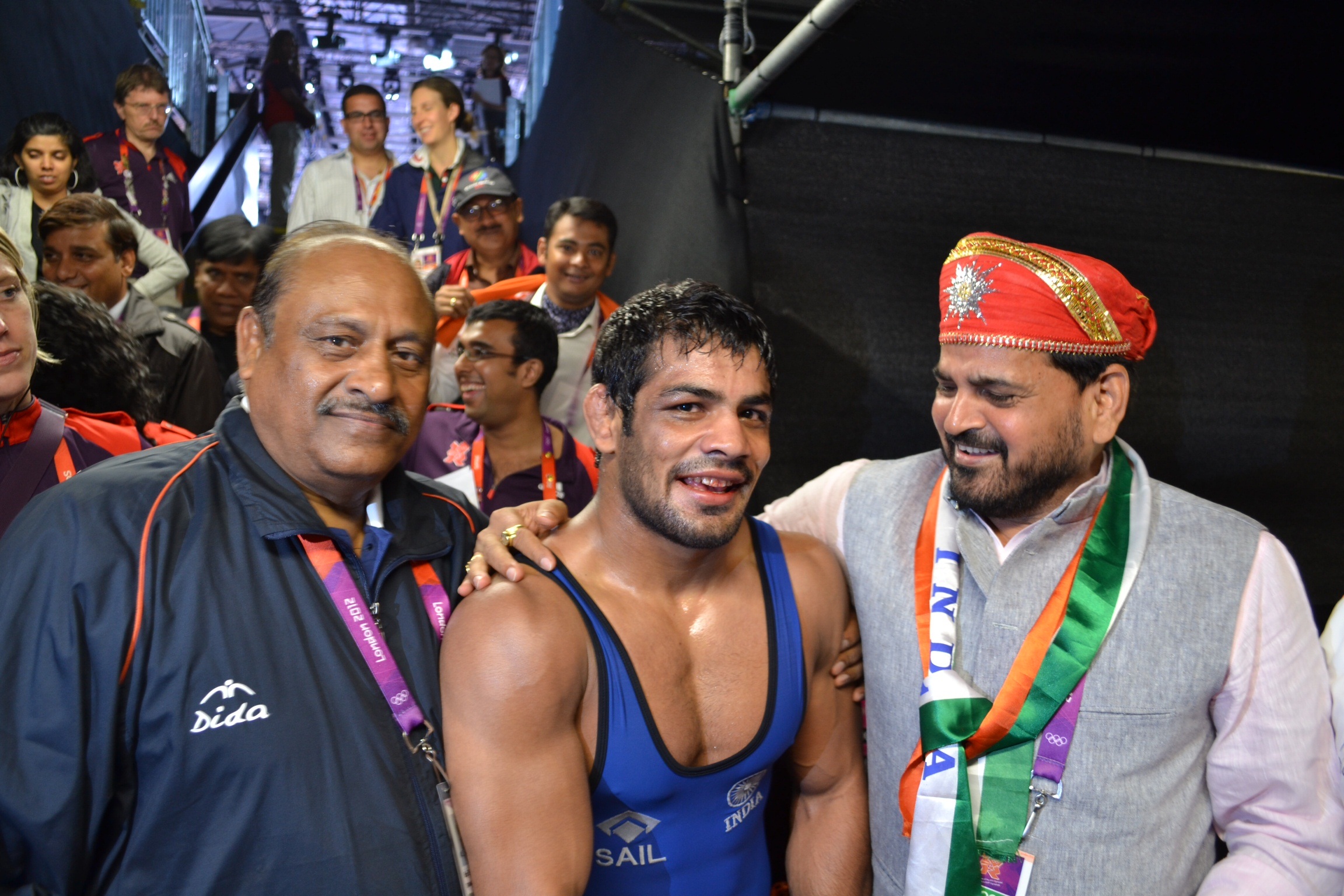 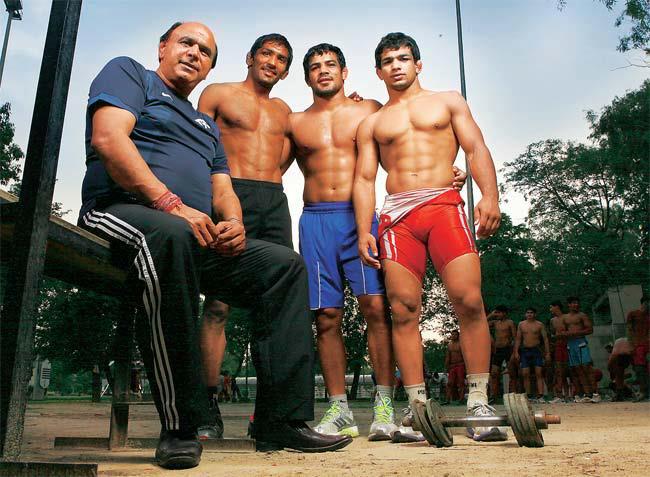 
The indian world class wrestlers: Sushil Kumar, Amit Kumar and Yogeswar Dutt.
India at the 2012 Summer Olympics in London
The Indian Olympic Association sent the
nation's largest delegation to the Games in Olympic history. A total of 83
athletes, 60 men and 23 women, competed in 13 sports. Men's field hockey was
the only team-based sport in which India had its representation in
these Olympic games. This was India's most successful Olympics in terms of
total medal tally, having won a total of 6 medals (2 silver and 4 bronze),
doubling the nation's previous record (3 medals at the 2008 Beijing Olympics).
Two medals each were awarded to the athletes in shooting and Wrestler and
Olympic bronze medalist Sushil Kumar managed to claim another medal
by winning silver in the men's freestyle wrestling. The Indian Olympic
Association also appointed him to be the nation's flag bearer at the opening
ceremony.
The Indian Wrestling League
The
Wrestling Federation of India and their Commercial Partner, Sporty Solutionz
(P) Ltd, announced the launch of the biggest pro wrestling league in the world,
the Indian Wrestling League (more).
International Situation
Since 1948, 68
Indian wrestlers have participated in the Olympics. 1952 Late Jadhav won the
bronze medal. Wrestling has changed a lot since then and it was a long dry
spell for India until in
2008 Sushil Kumar made in Beijing
with a bronze medal in his country for enthusiasm. He has caused a huge
wrestling boom with his success.In
London 2012 Kumar continued with silver ( 66Kg Freestyle ) his winning streak
continues and Yogeshwar Dutt contributed bronze at the best result of the
Indian wrestling Association .
Indian wrestlers
were able to win 8 medals so far at the World Championships in the adult
categorie. The first World Cup medal won Chand Udey 1961 in Yokohama ( Bronze) in the lightweight (67 kg).
Six years later in 1967 in New Delhi
Bishmbhr Singh (57 kg Cat.) won silver. After almost forty years of drought it
was a woman , Alka Tomar on the 2006 World Championships in Guangzhou,
China, won a
Broncemedal (55 kg ) for India. The Free Styler Ramesh Kumar
surprised 2009 Herning with bronze (74 kg) . In 2010, the first World Cup title
for India
was then due. Sushil Kumar triumphed in Moscow
in the lightweight (66 kg freestyle). The World Championships 2013 in Budapest should be the
biggest triumph in the Indian wrestling history. Amit Kumar won silver to 55Kg
and Bajrang Punia Bronze up to 60 kg each freestyle. Sandeep Tulsi Yadav won bronze
medal in the 66 Kg – limit. (the first World Cup medal in Greco / Roman style
for India).
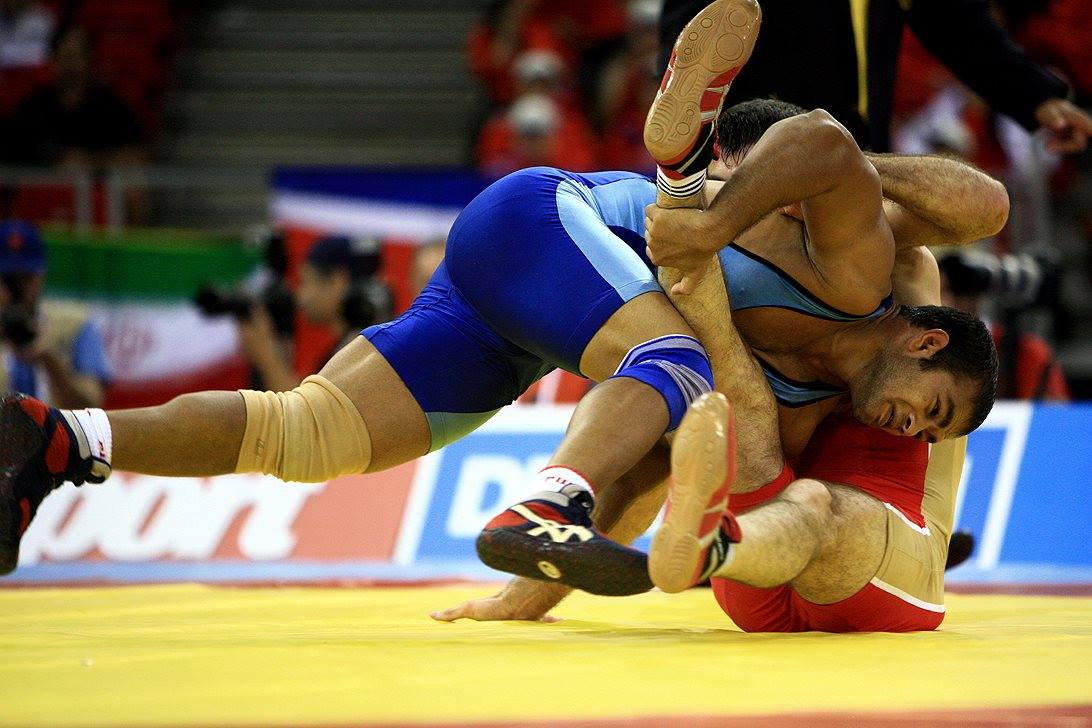 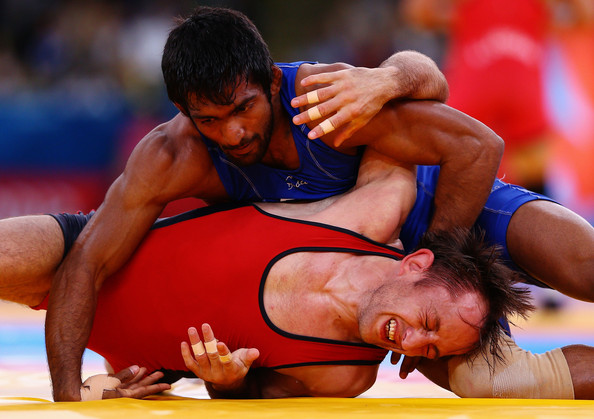 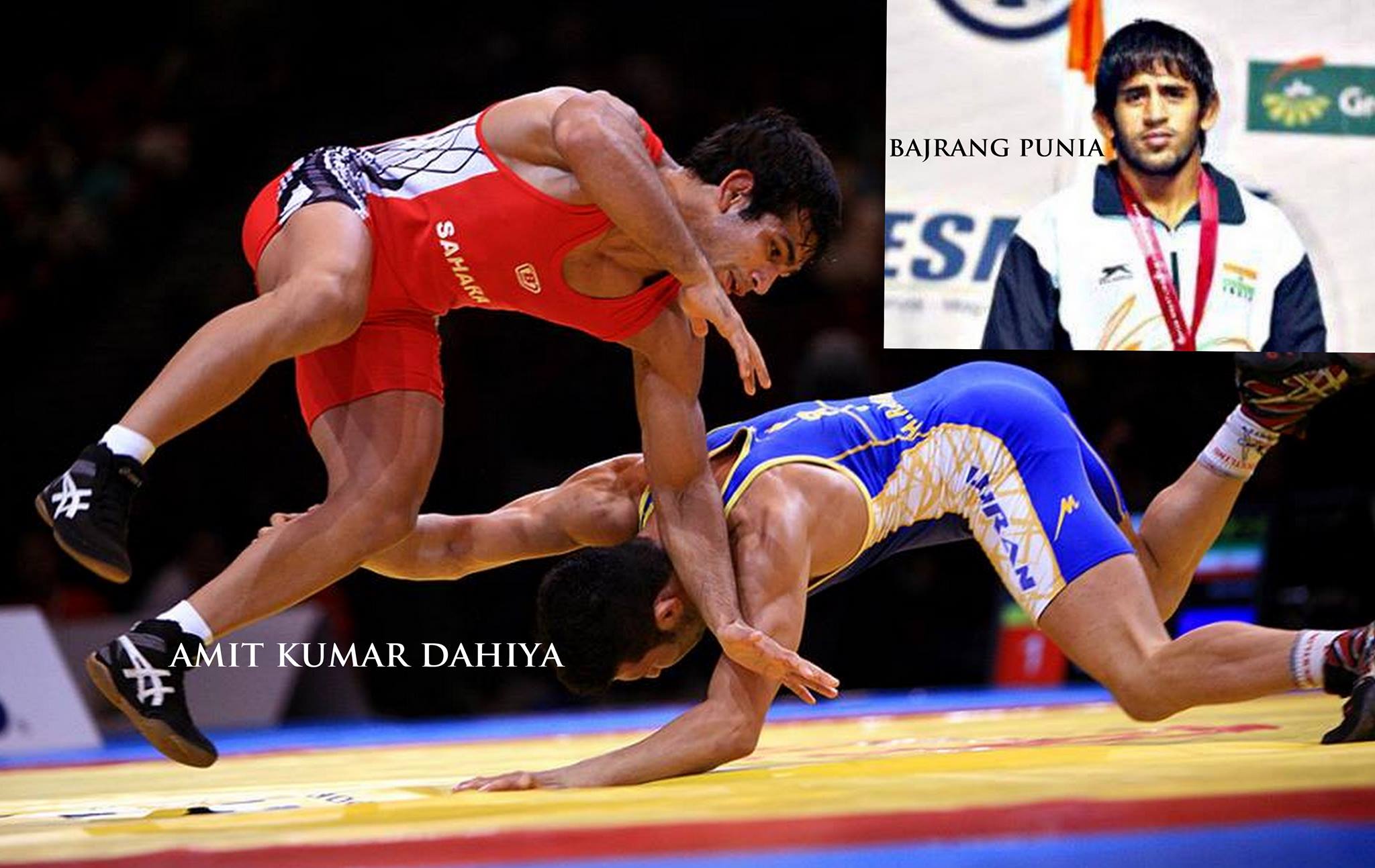
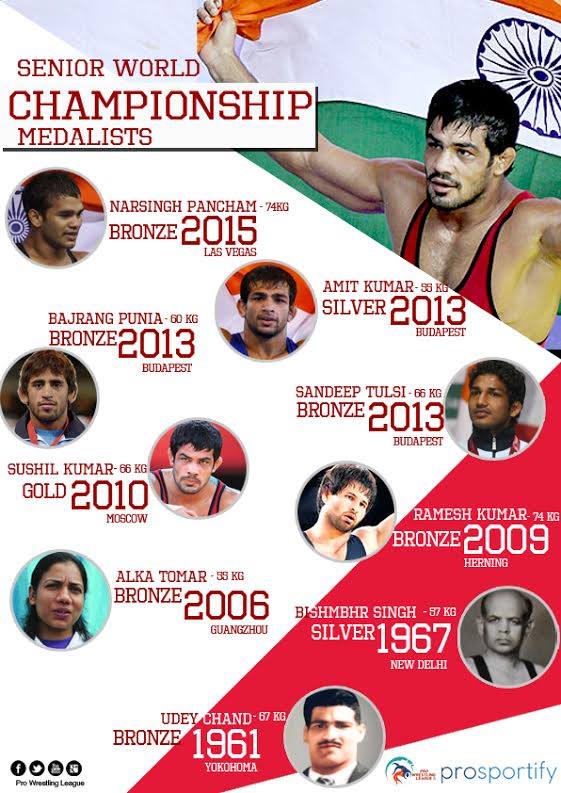
National Situation
India is in the international wrestling
scene the nation with by far the largest increase in performance in recent
years. The success triggered a wrestling boom in India,
has probably
not yet reached its climax. The billions of people from Bengal
has the potential to become a leading nation in the wrestling world because of
its mass and its wrestling tradition.
The best
Wrestlers such as Sushil Kumar-are members of the "Railway Sports
Promotion Board".
The
athletes are formally railway staff, but have professional training conditions.
This is exactly how the "Services Sports Control Board" works, which also promotes
many national top wrestlers. Top Province
of associations are Haryana and Delhi.
Province Associations
of India:
Bihar
Wrestling Association
Chandigarh UT Wrestling Association
Chhattisgarh
Wrestling Association
Delhi Amateur Wrestling Association
Wrestling
Association of Goa
Gujarat State Wrestling Association
Haryana
Wrestling Association
Himachal
Pradesh Wrestling Association
Jammu &
Kashmir Wrestling Association
Jhakhand State Wrestling Association
Karnataka
Wrestling Association
Kerala State Wrestling Association
M. P.
Amateur Wrestling Association
Maharashtra State Wrestling Association
Manipur
Wrestling Association
Mizoram
Wrestling Association
Nagaland
Wrestling Association
Orissa
Wrestling Association
Punjab Wrestling Association
Railway
Sports Promotion Board
Rajasthan
Wrestling Association
Services
Sports Control Board
Tamilnadu State Amateur Wrestling Association
U.P.
Wrestling Association
Wrestling
Association of Uttarakhand
West Bengal Wrestling Association
Wrestling Association of Tripura
Wrestling Federation
of India
Wrestling
Federation of India
4/23, III
Floor, East Patel Nagar,
Near Hotel Siddharth,
New Delhi-110008
Tel. No. +91 11 25732552,
fax No. +91 11 25732551
|
Sh.
Brij Bhushan Sharan Singh, MP
|
2
|
Shri
Raj Singh
|
|
President,
|
Secretary General,
|
|
Wrestling Federation of India
|
Wrestling Federation of India
|
|
14, Mahadev Road,
|
WZ – 25, Asalatpur,
|
|
New Delhi - 110001
|
Near Mata Channa
Devi Hospital,
|
|
|
Janakpuri,
|
|
|
New Delhi – 110058
|
|
|
Mobile: 9810674242
|
Homepage Wrestling Federation of India
(english)
http://wrestlingfederationofindia.com/
Homepage Indian Olimpic Asociation (english)
http://www.olympic.ind.in/
|







